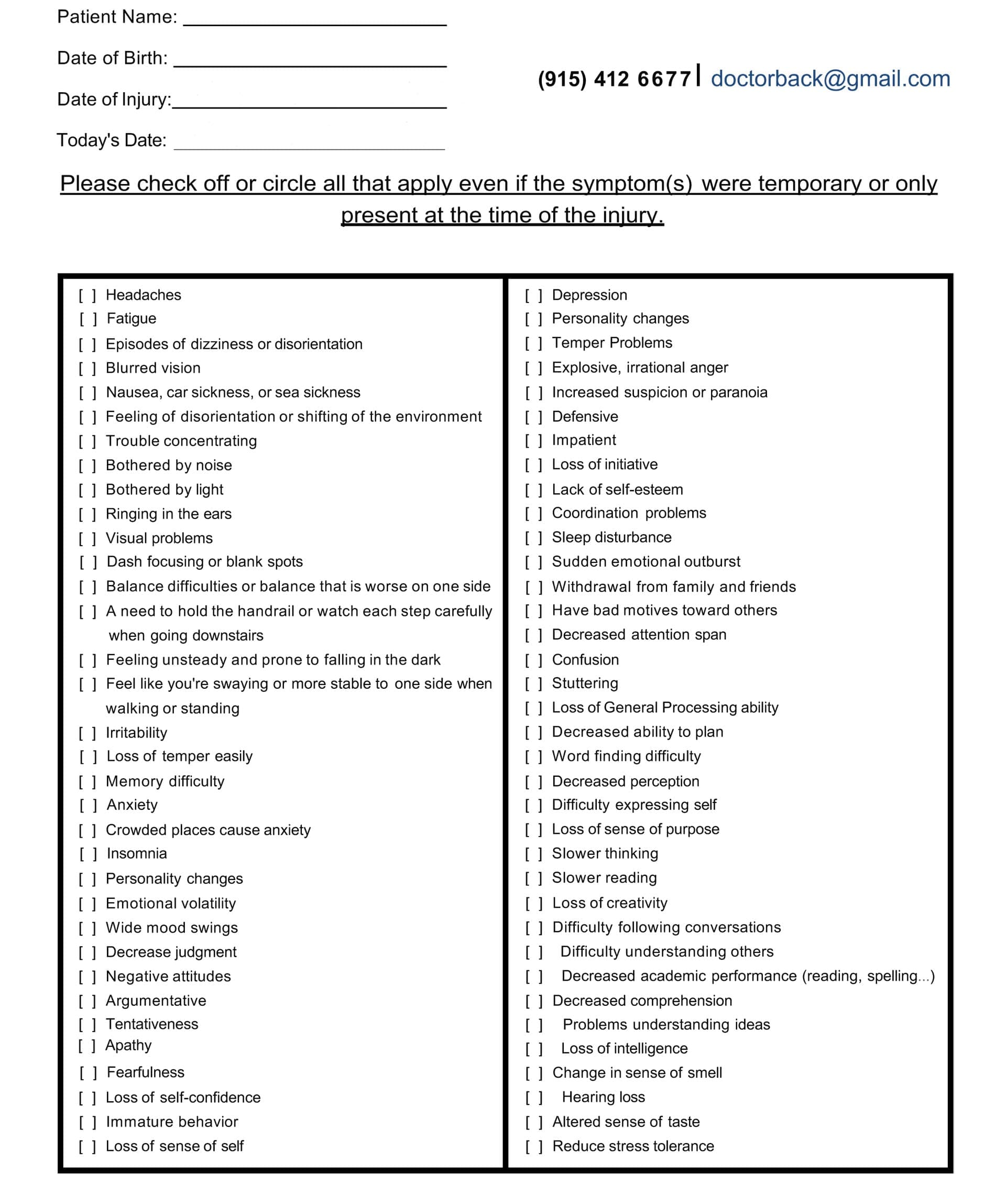Functional Wellness and Its Importance for Menopausal Women
Learn how functional wellness can help manage symptoms and promote a healthier lifestyle during menopause.
Flourishing Through Menopause: A Comprehensive Guide to Functional Wellness, Chiropractic Care, and Integrative Therapies for Symptom Relief
Introduction: Understanding Functional Wellness During Menopause
Menopause is one of the biggest changes in a woman’s life. It ends her reproductive years and starts a new chapter in her health and well-being. For millions of women throughout the globe, this normal biological process comes with a lot of symptoms that may make life much worse, such as hot flashes, mood swings, joint pain, and musculoskeletal pain. During menopause, the therapeutic reason for functional health becomes more significant, since this method targets the underlying causes of symptoms instead of merely concealing them with pharmaceuticals. nourishhousecalls+1
Functional wellness focuses on a whole-person, patient-centered approach that takes into account how bodily systems, lifestyle variables, and environmental factors all work together. This holistic view offers women many ways to manage menopausal symptoms while also improving their overall health. This is important because hormonal changes can have significant repercussions on the body. Functional wellness sees menopause as a natural process that may be helped by changes in diet, exercise, stress management, and other areas of life, rather than as an illness that needs treatment. clevelandclinic+2
During menopause, the musculoskeletal system requires specific care, as lower estrogen levels may harm joints, bones, muscles, and connective tissue. Studies show that almost 71% of women going through perimenopause have musculoskeletal discomfort, which is one of the most frequent but generally ignored signs of this life change. Joint stiffness, muscular pain, and general body discomfort may make life much less enjoyable and make it hard to stay active, which is when exercise is most important for staying healthy. orthopedicsri+2
Chiropractic care, acupuncture, and massage therapy are all non-surgical therapies that may help with menopause symptoms without the negative effects that often come with drugs. You may tailor treatment plans to meet each woman’s specific requirements and health objectives by combining these therapies with dietary changes, exercise regimens, and adjustments to daily living. dutchessbraincore+2
What is Menopause?
Menopause is a natural biological process that marks the permanent end of menstrual cycles and fertility. It is clinically defined as occurring after 12 consecutive months of amenorrhea (absence of menstruation) not linked to a pathological cause. While menopause itself is a single point in time—the moment when a full year has passed without a menstrual period—the transition encompasses several years of hormonal changes that can produce symptoms affecting virtually every system in the body. pmc.ncbi.nlm.nih+1
The average age of menopause for women in the United States is 51 years old, though this can vary significantly between individuals. Some women experience menopause in their early 40s, while others may not reach this milestone until their late 50s. The timing is influenced by genetics, lifestyle factors, and overall health status. myobgynvegas
The Biological Mechanism of Menopause
Menopause results from the natural depletion of ovarian follicles over a woman’s reproductive lifespan. Each woman is born with a finite number of eggs, and as these are gradually used during monthly ovulation or naturally degenerate, the ovaries’ capacity to produce hormones diminishes. The pathophysiology involves a rapid decline in the number of primary ovarian follicles, resulting in an inadequate number to respond to follicle-stimulating hormone (FSH). ncbi.nlm.nih+1
When the ovaries can no longer respond adequately to FSH signals from the pituitary gland, several hormonal changes occur: pmc.ncbi.nlm.nih+1
- Estrogen production declines significantly, though small amounts may still be produced through conversion from testosterone released by the adrenal glands.
- Progesterone production decreases and eventually stabilizes at very low levels.
- FSH and luteinizing hormone (LH) levels remain elevated for years after menopause onset due to the lack of negative feedback from ovarian hormones
- Testosterone levels do not change as dramatically early in menopause, leading to a relative increase in the testosterone-to-estrogen ratio (ncbi.nlm).nih
This hormonal shift affects virtually every organ system in the body, as estrogen receptors are present throughout tissues, including the brain, heart, bones, joints, skin, and reproductive tract. arthritis+1
The Phases of Menopause
The menopausal transition unfolds over three distinct phases, each characterized by different hormonal patterns and symptom experiences.columbusobgyn+3
Perimenopause: The Transitional Phase
Perimenopause represents the years leading up to menopause when the body begins its transition away from reproductive function. This phase typically begins 8 to 10 years before menopause, often starting in a woman’s mid-40s, though it can begin earlier. During perimenopause, hormone levels fluctuate unpredictably, creating a rollercoaster of symptoms that can be challenging to manage. mcpress.mayoclinic+2
The early perimenopause stage is characterized by: columbusobgyn
- Shortened follicular phase leading to more frequent menstrual cycles
- Occasional hot flashes lasting from seconds to minutes
- Mild changes in skin elasticity and breast tenderness
- Subtle mood variations and increased stress sensitivity
As perimenopause progresses into the middle and late transition stages, women typically experience: columbusobgyn
- Menstrual cycles that vary by seven or more days from normal patterns
- More frequent and potentially more severe hot flashes
- Increased vaginal dryness and sleep disruption
- Daily hot flashes and night sweats that may feel more intense and last longer
- Heightened anxiety or mood fluctuations
Menopause: The Defining Moment
Menopause itself is not a phase but rather a single point in time—the day when a woman has gone 12 consecutive months without a menstrual period. At menopause, the body’s production of estrogen, progesterone, and testosterone is significantly reduced, while FSH and LH levels are elevated. samitivejhospitals+2
Postmenopause: The Years Beyond
Postmenopause begins immediately after menopause is confirmed and continues for the remainder of a woman’s life. Most menopausal symptoms gradually decrease in intensity during postmenopause, with some women experiencing significant relief within the first few years. However, certain changes require ongoing attention: joinmidi+1
- Bone density continues to decline due to reduced estrogen’s effects on bone remodeling.
- Cardiovascular health becomes more vulnerable as estrogen’s protective effects diminish.
- Genitourinary changes may persist or develop, including vaginal atrophy and urinary symptoms joinmidi
Common Symptoms of Menopause
Menopause produces a wide spectrum of symptoms that vary dramatically between individuals. myobgynvegas+2
Vasomotor Symptoms
Hot flashes and night sweats are among the most recognizable menopausal symptoms, affecting approximately 75% to 80% of women with varying severity. Hot flashes typically begin as a sudden sensation of warmth spreading through the upper body and face, often accompanied by flushing, sweating, and heart palpitations. templehealth+2
Mood and Cognitive Changes
Hormonal fluctuations during menopause significantly impact brain function and emotional regulation: endocrine
- Mood swings ranging from irritability to sadness
- Anxiety and increased stress sensitivity
- Brain fog is characterized by difficulty concentrating and memory lapses
- Depression or persistent low mood
These symptoms result from estrogen’s relationship with serotonin and other neurotransmitters that regulate mood. endocrine
Sleep Disturbances
Sleep problems affect more than 60% of menopausal women: integratedchiropracticofboca+1
- Night sweats interrupt sleep cycles
- Insomnia may develop independently of vasomotor symptoms
- Sleep apnea risk increases during and after menopause womens-health-concern
Genitourinary Symptoms
As estrogen declines, significant changes occur in the vulva, vagina, and urinary tract: ncbi.nlm.nih+1
- Vaginal dryness and thinning of vaginal tissue
- Increased urinary tract infections
- Urinary urgency and incontinence
Musculoskeletal Symptoms
Nearly half of menopausal patients experience musculoskeletal symptoms like joint pain: tandfonline+1
- Joint pain and stiffness
- Muscle aches and loss of grip strength
- Frozen shoulder
- Loss of lean muscle mass
How Menopause Affects Hormones in the Body
Understanding the hormonal changes that occur during menopause provides crucial insight into why symptoms develop. samitivejhospitals+1
Estrogen: The Primary Change
Estrogen is the primary female hormone with receptors distributed throughout the body. During menopause, estrogen levels drop dramatically—often to less than 10 pg/mL—creating widespread effects. aarp+2
Estrogen’s decline affects multiple systems: pmc.ncbi.nlm.nih
- Brain: Impacts mood regulation, memory, and cognitive function
- Bones: Accelerates bone resorption, increasing osteoporosis risk
- Heart: Removes protective effects on blood vessels
- Joints: Reduces cartilage protection and synovial fluid production
Progesterone and Testosterone
Progesterone production decreases during perimenopause as ovulation becomes irregular, then stabilizes at low levels after menopause. Testosterone levels do not decrease as dramatically during early menopause, creating a relative increase in the testosterone-to-estrogen ratio. samitivejhospitals+1
FSH, LH, and Cortisol
FSH and LH levels increase significantly as the pituitary attempts to stimulate unresponsive ovaries. Cortisol levels may be elevated during menopause, contributing to sleep disturbances, weight gain, and mood changes. ncoa+2
How Fluctuating Hormones Affect the Musculoskeletal System
The musculoskeletal system is profoundly affected by the hormonal changes of menopause, yet these effects are often overlooked or misattributed to normal aging. Research has established what experts now term the “musculoskeletal syndrome of menopause.” dralisongrimaldi+2
The Role of Estrogen in Joint and Bone Health
Estrogen plays a vital role in maintaining musculoskeletal health through multiple mechanisms: jointrehab+2
- Cartilage Protection: Estrogen helps keep cartilage flexible and supports the production of synovial fluid, which lubricates joints. As estrogen levels decline, cartilage may degrade more rapidly. orthopedicsri
- Anti-Inflammatory Effects: Estrogen exhibits anti-inflammatory properties by inhibiting the release of inflammatory cytokines, such as TNF-α and IL-1β. When estrogen declines, inflammation increases throughout the body. pmc.ncbi.nlm.nih+2
- Bone Remodeling: Estrogen deficiency leads to accelerated osteoclast activity and increased bone resorption, resulting in bone loss of up to 20% during the menopausal transition. puregym+1
Prevalence of Musculoskeletal Pain
The overall prevalence of musculoskeletal pain in perimenopausal women is approximately 71%. A study including more than 40,000 women found that osteoarthritis was more common among women who had undergone menopause at least one year prior, compared with those who had a recent menstrual period (31% vs. 24%). rheumatologyadvisor+2
Specific Musculoskeletal Effects
- Joint Pain and Osteoarthritis: The decline in estrogen accelerates the progression of osteoarthritis, particularly in weight-bearing joints. pmc.ncbi.nlm.nih+1
- Muscle Loss (Sarcopenia): Research indicates that compared to women in early perimenopause, those with menopause have 10% less muscle mass in their arms and legs. puregym
- Bone Density Loss: Weakened bones are more prone to fractures, increasing the risk of injury in the spine, hips, and wrists. orthopedicsri+1
- Weight Gain Impact: Many women experience weight gain during menopause, which can add extra stress to joints. Visceral fat increases from 5-8% to 10-15% of total body weight. puregym
Chiropractic Care for Menopausal Symptoms
Chiropractic care offers a safe, effective, and natural approach to managing menopausal symptoms, particularly those affecting the musculoskeletal system. accidentcarechiropractic+2
How Chiropractic Care Supports Menopausal Women
- Hormone Regulation Through Nervous System Support: The spine houses the nerves that control the endocrine system. The hypothalamus plays a significant role in hormone production, and misalignments in the spine can interfere with its functioning. By correcting subluxations, chiropractic care can help regulate hormone production and improve menopausal symptoms. raleighchiropractic+3
- Reduced Nervous System Stress: Chiropractic adjustments relieve pressure on the spine and restore proper nervous system function, supporting the body’s ability to regulate hormones more efficiently. familychiropracticcolumbus+1
- Improved Circulation: Chiropractic adjustments improve circulation by freeing up restrictions in the spine, helping reduce hot flashes and night sweats. dutchessbraincore+1
- Stress Management and Better Sleep: Chiropractic care promotes relaxation, stimulates the parasympathetic nervous system, and improves sleep quality in menopausal women. integratedchiropracticofboca+2
Evidence for Chiropractic Care
Studies published in the Journal of Vertebral Subluxation Research found that chiropractic care was effective in reducing hot flashes, night sweats, and mood swings in menopausal women. The Journal of Manipulative and Physiological Therapeutics reported improved sleep quality in menopausal women receiving chiropractic treatment. dutchessbraincore
Acupuncture Benefits for Menopause
Acupuncture, rooted in Traditional Chinese Medicine, involves inserting thin needles into specific points to stimulate energy flow and restore balance. pmc.ncbi.nlm.nih+1
Research on Acupuncture and Menopause
A study of Japanese women in menopause found that menopausal symptoms were significantly reduced with individualized acupuncture treatments, exclusively due to improvement of musculoskeletal symptoms. Participants experienced relief from fatigue, chronic neck pain, and low back pain. pmc.ncbi.nlm.nih
How Acupuncture Works
Acupuncture provides benefits through several mechanisms: pmc.ncbi.nlm.nih+1
- Pain Modulation: Stimulates the release of natural painkillers (endorphins)
- Inflammation Reduction: Decreases inflammatory markers
- Hormonal Effects: May help regulate cortisol and melatonin
- Nervous System Regulation: Activates the parasympathetic nervous system
The number of menopausal women is expected to increase from 467 million in 1990 to 1.2 billion in 2030, suggesting acupuncture’s role as an integrative therapy will continue to grow. pmc.ncbi.nlm.nih
Massage Therapy for Menopausal Relief
Massage therapy provides valuable benefits for both physical and emotional well-being during menopause. pubmed.ncbi.nlm.nih+2
Evidence for Massage Therapy
A randomized controlled trial found that both massage and aromatherapy were effective in reducing menopausal symptoms. Research demonstrates that therapeutic massage: pubmed.ncbi.nlm.nih
- Decreases the severity of sleep disturbance related to menopause
- Reduces insomnia and anxiety-depressive symptoms pmc.ncbi.nlm.nih
- Improves overall mood through endorphin release and cortisol reduction westernregionhealth
Benefits of Massage During Menopause
- Stress Reduction: Massage reduces stress and anxiety by promoting endorphin release and reducing cortisol levels. westernregionhealth
- Muscle Pain Relief: Massage targets muscle knots and tension, providing relief from discomforts common during menopause. westernregionhealth
- Sleep Enhancement: Massage significantly improves sleep patterns and reduces sleep disturbances. pmc.ncbi.nlm.nih+1
Physical Therapy and Exercise for Menopausal Health
Physical therapy and exercise represent cornerstones of managing menopausal musculoskeletal symptoms. resilienceorthopedics+2
The Importance of Exercise
Exercise is one of the best treatments for menopause and joint pain: resilienceorthopedics
- Joint Health: Strengthens supporting muscles and promotes synovial fluid circulation.
- Bone Density: Weight-bearing exercises stimulate bone building uclahealth+1
- Muscle Preservation: Resistance training counters sarcopenia puregym
Types of Exercise for Menopausal Women
- Resistance Training: The most recommended exercise for menopausal joint pain. Women over 60 with osteoporosis who participated in strength training showed significant improvements in bone density. uchealth+1
- Weight-Bearing Exercise: Walking, dancing, and stair climbing promote bone strength. Specialists recommend at least 150 minutes per week of moderate cardiovascular activity. nyulangone
- Mind-Body Exercise: Yoga, tai chi, and Pilates significantly improve bone mineral density, sleep quality, anxiety, depression, and fatigue in perimenopausal and postmenopausal women. pmc.ncbi.nlm.nih+1
Aligned & Empowered: Chiropractic Conversations on Women’s Health-Video
Nutrition and Diet for Menopausal Wellness
Nutrition plays a crucial role in managing symptoms and supporting long-term health. pmc.ncbi.nlm.nih+2
Anti-Inflammatory Dietary Approaches
An anti-inflammatory diet emphasizes: pmc.ncbi.nlm.nih+1
- Vegetables: Leafy greens, cruciferous vegetables
- Fruits: Berries, cherries, citrus
- Fatty fish: Rich in omega-3 fatty acids
- Nuts and seeds: Walnuts, flaxseeds
- Healthy fats: Extra virgin olive oil, avocado
- Herbs and spices: Turmeric, ginger
The Mediterranean diet has shown particular benefits for menopausal women, associated with better bone mineral density and improved symptoms. rebellehealth+1
Key Nutrients
- Calcium: Recommendations of 1200-1300 mg daily for postmenopausal women. pubmed.ncbi.nlm.nih+1
- Vitamin D: Intake between 800-900 IU daily, combined with calcium, increases bone mineral density and reduces fracture risk. frontiersin+1
- Omega-3 Fatty Acids: Possess anti-inflammatory properties that reduce joint pain. Women who consumed more omega-3 fatty acids had fewer menopausal symptoms. goodrx+1
- Protein: Higher intake (approximately 1.2 g/kg body weight) is associated with a 32% lower risk of frailty. pmc.ncbi.nlm.nih
Sleep Hygiene for Menopausal Women
Sleep disturbances affect more than half of menopausal women.swanstudy+1
Evidence-Based Sleep Strategies
Research emphasizes addressing sleep issues early during the menopausal transition. Recommended strategies include: swanstudy
- Establish a Regular Sleep Schedule: Go to bed and wake up at the same time each day. womens-health-concern+1
- Create an Optimal Sleep Environment: Keep the bedroom cool, dark, and quiet; use cooling sheets; consider a fan. healthline+2
- Develop a Relaxing Routine: Allow time to unwind; avoid screens for at least one hour before bed. ncoa+1
- Mind Dietary Habits: Avoid caffeine after lunchtime; limit alcohol; avoid spicy foods close to bedtime. swanstudy+1
- Cognitive Behavioral Therapy for Insomnia (CBT-I): The most effective treatment for chronic insomnia during menopause. womens-health-concern
Lifestyle Changes for Managing Symptoms
Beyond specific therapies, broader lifestyle changes significantly impact the menopausal experience. whsobgyn+2
Stress Management
Effective techniques include: nature+1
- Mindfulness meditation: Significantly reduces anxiety, depression, and menopausal symptoms
- Yoga: Improves psychological symptoms, sleep, and musculoskeletal pain
- Deep breathing exercises: Helps manage hot flashes
Smoking Cessation and Alcohol Moderation
Women who smoke experience more frequent and severe hot flashes. Alcohol can trigger hot flashes and disrupt sleep; limiting intake to no more than one serving per day is recommended. nyulangone
Weight Management
Maintaining a healthy weight reduces joint stress, helps manage hot flashes, and supports cardiovascular health. medlineplus+1
Dr. Alexander Jimenez’s Clinical Observations on Integrative Menopause Care
Dr. Alexander Jimenez, DC, APRN, FNP-BC, CFMP, IFMCP, based in El Paso, Texas, brings over 25 years of expertise in integrative medicine to menopausal care. His dual licensure as a Family Practice Nurse Practitioner and Chiropractor enables patient-centered care, bridging physical medicine, functional medicine, and advanced diagnostics. a4m+1
The Functional Medicine Approach
Dr. Jimenez’s practice emphasizes functional medicine principles, viewing the body as one integrated system. Key elements include: dralexjimenez+1
- Comprehensive health assessments evaluating genetics, lifestyle, and environmental factors
- Personalized treatment plans tailored to individual health profiles
- Integration of conventional and complementary therapies
- Patient empowerment through education and active participation
Integrative Treatment Protocols
Dr. Jimenez’s protocols integrate multiple modalities: a4m+1
- Chiropractic adjustments for spinal alignment and nerve function
- Acupuncture and electro-acupuncture for pain and hormonal balance
- Targeted exercise programs focusing on flexibility, mobility, and strength
- Massage therapy for muscle tension and stress management
- Nutritional counseling supporting hormonal balance and bone health
As Dr. Jimenez emphasizes in his clinical practice, addressing root causes rather than simply treating symptoms produces lasting improvement. His team at Injury Medical & Chiropractic Clinic in El Paso collaborates to deliver personalized treatment plans, ensuring each patient receives care tailored to their unique needs. dralexjimenez+1
For more information about Dr. Jimenez’s integrative approach, visit https://dralexjimenez.com/ or connect on LinkedIn.
Conclusion: Embracing Functional Wellness Through the Menopausal Transition
Menopause is a major life change, but with the right support, it can be well-managed. During this time, the case for functional wellness is especially strong because hormonal changes affect the body in many ways that require care for the whole person. +1 nourishhousecalls
Up to 71% of women going through menopause have the musculoskeletal syndrome of menopause. Integrative methods like tandfonline+1 work well for them.
- Chiropractic adjustments help the nervous system and line up the spine
- Acupuncture to balance hormones and ease pain
- Massage therapy to help with stress and tight muscles
- Exercise and physical therapy are good for your bones, muscles, and joints.
- Foods that fight inflammation in the body to lower it
- Keeping good sleep hygiene can help you heal and keep your hormones in check.
Mind-body methods for dealing with stress
Women can not only deal with the symptoms of menopause but also thrive during this normal life transition by using evidence-based integrative treatments and adopting functional wellness ideas. The goal is not just to treat the symptoms, but also to improve long-term health, energy, and quality of life.
References
- Academy of Orthopedic Physical Therapy. (2024, December 29). Menopause and joint pain: An orthopedic perspective. Orthopedics Rhode Island. http://www.orthopedicsri.com/blog-items/menopause-and-joint-pain-an-orthopedic-perspective/
- Academy of Orthopedic Surgeons. (2025, September 17). Menopause joint pain: How to find treatment and get relief. Resilience Orthopedics. https://www.resilienceorthopedics.com/treatment/menopause-joint-pain/
- Accident Care Chiropractic. (2023, December 20). Naturally alleviate symptoms of menopause with chiropractic care. https://accidentcarechiropractic.com/chiropractic-care-for-natural-menopause-relief/
- Alameda Acupuncture. (2025, March 23). The synergy of acupuncture and chiropractic care: A path to holistic healing. https://alamedaacupuncture.com/?p=5010
- American Academy of Family Physicians. (2025, April 17). Menopause and sleep: What every woman should know. National Council on Aging. https://www.ncoa.org/article/menopause-and-sleep-what-every-woman-should-know/
- American Academy of Sleep Medicine. (2024, September 23). Menopause and midnight mayhem: 50% of women aged 45-64 report disrupted sleep. https://aasm.org/menopause-and-midnight-mayhem-50-of-women-aged-45-64-report-disrupted-sleep/
- American Association of Retired Persons. (2025, March 8). Midlife joint pain could be caused by menopause. AARP. https://www.aarp.org/health/conditions-treatments/menopause-joint-pain/
- American College of Anti-Aging Medicine. (2016, December 31). Dr. Alex Jimenez, DC, APRN, FNP-BC, CFMP, IFMCP – Injury Medical & Chiropractic Clinic, El Paso, TX. A4M. https://www.a4m.com/alex-jimenez-injury-medical-amp-chiropractic-clinic-el-paso-tx.html
- American Massage Therapy Association. (2020, November 29). Research: Massage and menopause. Massage Therapy Journal. https://www.amtamassage.org/publications/massage-therapy-journal/massage-and-menopause/
- Arthritis Foundation. (2024, September 15). Joint pain in menopause. https://www.arthritis.org/news/news-and-events/joint-pain-in-menopause
- Back in Balance Wellness Center. (2025, February 25). How spinal alignment supports the endocrine system. https://backinbalancewnc.com/how-spinal-alignment-supports-the-endocrine-system/
- British Dietetic Association. (2023, June). Menopause nutrition and weight gain [Fact sheet]. British Menopause Society. https://thebms.org.uk/wp-content/uploads/2023/06/19-BMS-TfC-Menopause-Nutrition-and-Weight-Gain-JUNE2023-A.pdf
- Bruice, K. (2025, May 10). Menopause hip pain exercises: Easy moves for daily relief. Kenton Bruice, MD. https://kentonbruicemd.com/menopause-hip-pain-exercises-easy-moves-for-daily-relief/
- Chiropractic Healing Team. (2025, April 28). Chiropractic and hormonal balance: Natural alignment for better health. https://chiropractichealingteam.com/chiropractic-and-hormonal-balance-natural-alignment-for-better-health/
- Cleveland Clinic. (2024, February 27). Functional medicine and menopause [Podcast episode]. In E. Newlin (Host), Ob/Gyn Time. Cleveland Clinic. https://my.clevelandclinic.org/podcasts/ob-gyn-time/functional-medicine-and-menopause
- Columbus OBGYN. (2024, November 30). What are the five stages of menopause? https://columbusobgyn.com/what-are-the-five-stages-of-menopause/
- Drummond, J. (2025, September 15). New approach to musculoskeletal pain in menopause. Integrative Women’s Health Institute. https://integrativewomenshealthinstitute.com/new-approach-to-musculoskeletal-pain-in-menopause-with-dr-jessica-drummond/
- Duchessne BrainCore. (2023, March 6). Chiropractic can help with menopause symptoms. https://www.dutchessbraincore.com/chiropractic-care/chiropractic-can-help-with-menopause-symptoms/
- Eating Well. (2025, August 25). 5 anti-inflammatory foods women over 50 should eat. https://www.eatingwell.com/anti-inflammatory-foods-for-women-over-50-11794640
- Elevis Wellness Collective. (2024, March 13). Acupuncture and menopause: Navigating the transition. https://eleviswellnesscollective.com/acupuncture-and-menopause-navigating-the-transition/
- Elevation Health Center. (2025, July 27). Is your spine throwing off your hormones? https://elevationhealthcenter.com/can-spinal-misalignment-cause-hormones-to-be-imbalanced/
- Endocrine Society. (2022, March 30). Menopause. Endocrine Library. https://www.endocrine.org/patient-engagement/endocrine-library/menopause
- Family Chiropractic Columbus. (2025, January 28). Spinal alignment, hormones, and stress: A chiropractor’s guide for women. https://familychiropracticcolumbus.com/2025/01/29/spinal-alignment-hormones-and-stress-a-chiropractors-guide-for-women/
- Family Chiropractic Columbus. (2025, April 22). Hot flashes, mood swings, and back pain – Could chiropractic care help? https://familychiropracticcolumbus.com/2025/04/23/hot-flashes-mood-swings-and-back-pain-could-chiropractic-care-help/
- Georgetown University School of Nursing. (2021, October 3). A guide to perimenopause, menopause, and postmenopause. Online Nursing. https://online.nursing.georgetown.edu/blog/a-guide-to-perimenopause-menopause-and-postmenopause/
- GoodRx. (2025, November 2). The 6 best supplements for menopause joint pain. https://www.goodrx.com/conditions/menopause/supplements-for-menopause-joint-pain
- Grimaldi, A. (2025, August 1). Menopause and musculoskeletal health: Why it matters. Dr. Alison Grimaldi. https://dralisongrimaldi.com/blog/menopause-and-musculoskeletal-health/
- Healthline. (2018, November 22). Menopause diet: How what you eat affects your symptoms. https://www.healthline.com/nutrition/menopause-diet
- Healthline. (2025, June 8). Sleep hygiene during perimenopause and menopause. https://www.healthline.com/health/menopause/sleep-hygiene-during-perimenopause-and-menopause
- Heights OBGYN. (2024, April 18). Manage menopause with lifestyle changes. https://www.heightsobgyn.com/manage-menopause-with-lifestyle-changes/
- Hinge Health. (2024, May 13). Hinge Health integrates movement-based menopause support into a digital care platform. https://www.hingehealth.com/resources/press-releases/hinge-health-integrates-movement-based-menopause-support/
- Hinge Health. (2025, March 27). Best exercises for menopause: 5 types and how they help. https://www.hingehealth.com/resources/articles/menopause-exercise/
- Hirota, J., Takayama, M., Nasu, M., Schlaeger, J. M., Yajima, H., & Takakura, N. (2023). Exploration of Japanese women seeking acupuncture for menopausal symptoms: A preliminary study. International Journal of Complementary and Alternative Medicine, 16(6), 344–346. https://doi.org/10.15406/ijcam.2023.16.00674
- Hwang, L., & Kolasinski, S. L. (2012). Aromatherapy massage effects on menopausal symptoms: A randomized placebo-controlled study. Menopause, 19(9), 995–999. https://pubmed.ncbi.nlm.nih.gov/22549173/
- Innes, K. E., Selfe, T. K., & Vishnu, A. (2010). Mind-body therapies for menopausal symptoms: A systematic review. Maturitas, 66(2), 135–149. https://doi.org/10.1016/j.maturitas.2010.01.016
- Integrated Chiropractic of Boca Raton. (2025, August 13). Relief for women: Chiropractic care can help alleviate menopausal symptoms. https://integratedchiropracticofboca.com/relief-women-chiropractic-care-can-help-alleviate-symptoms-menopause/
- Jimenez, A. (2025). El Paso’s premier wellness and injury care clinic. Dr. Alex Jimenez DC. https://dralexjimenez.com
- Jimenez, A. (n.d.). Functional endocrinology: Perimenopause. Dr. Alex Jimenez DC. https://dralexjimenez.com/functional-endocrinology-perimenopause/
- Joint Reaction. (n.d.). Treating joint pain following menopause with physiotherapy. https://www.jointreaction.ca/treating-joint-pain-following-menopause-with-physiotherapy/
- Joint Rehab and Sports Medical Center. (2025, May 7). Estrogen and joint pain. https://jointrehab.com/estrogen-and-joint-pain/
- Loyola Medicine. (2025, August 28). Menopause-related musculoskeletal pain. Loyola Medicine Newsroom. https://www.loyolamedicine.org/newsroom/blog-articles/menopause-related-musculoskeletal-pain
- Mayo Clinic. (2024, August 6). Menopause: Symptoms and causes. https://www.mayoclinic.org/diseases-conditions/menopause/symptoms-causes/syc-20353397
- Mayo Clinic Network. (2022, March 28). Mayo Clinic Minute: Lifestyle changes to manage menopause symptoms. https://newsnetwork.mayoclinic.org/discussion/mayo-clinic-minute-lifestyle-changes-to-manage-menopause-symptoms/
- Mayo Clinic Network. (2024, September 25). Perimenopause, menopause, and weightlifting: Expert explains value for bone health. https://newsnetwork.mayoclinic.org/discussion/perimenopause-menopause-and-weightlifting-expert-explains-value-for-bone-health/
- Mayo Clinic Press. (2025, January 9). Explaining the stages of menopause. https://mcpress.mayoclinic.org/menopause/explaining-the-stages-of-menopause/
- MedlinePlus. (1998, October 21; updated 2025). Menopause symptoms. U.S. National Library of Medicine. https://medlineplus.gov/menopause.html
- Menopause Solutions. (2024, July 13). Combating menopausal symptoms with omega-3 supplements: A natural approach to wellness. https://www.menopausesolutions.org/post/combating-menopausal-symptoms-with-omega-3-supplements-a-natural-approach-to-wellness
- Midi Health. (2025, April 28). The complete list of menopause symptoms at every stage and age. https://www.joinmidi.com/post/menopause-symptoms
- Midi Health. (2025, April 28). Menopause and joint pain: Causes and treatment options. https://www.joinmidi.com/post/menopause-joint-pain
- My MenoPlan. (2022, April 5). Acupuncture. https://mymenoplan.org/acupuncture/
- My MenoPlan. (2022, April 6). Meditation, mindfulness, mindfulness-based stress reduction. https://mymenoplan.org/meditation-mindfulness-mindfulness-based-stress-reduction/
- My OBGYN Vegas. (2024, October 28). Understanding menopause: Symptoms, stages, and management. https://myobgynvegas.com/understanding-menopause/
- National Institutes of Health. (2023, December 20). Menopause. StatPearls. https://www.ncbi.nlm.nih.gov/books/NBK507826/
- Newson, L. (2025, June 4). Omega-3, menopause and hormone health. Dr. Louise Newson. https://www.drlouisenewson.co.uk/knowledge/omega-3-menopause-and-hormone-health
- Nourish House Calls. (2025, October 27). Menopause relief through functional medicine: What to expect. https://nourishhousecalls.com/menopause-relief-through-functional-medicine/
- NYU Langone Health. (n.d.). Lifestyle changes for menopause. https://nyulangone.org/conditions/menopause/treatments/lifestyle-changes-for-menopause
- Oliveira, D., Hachul, H., Tufik, S., & Bittencourt, L. (2011). Effect of massage in postmenopausal women with insomnia – A pilot study. Clinics (São Paulo), 66(2), 343–346. https://doi.org/10.1590/S1807-59322011000200026
- Pause Life. (2025, October 8). The ultimate menopause toolkit: An anti-inflammatory approach to managing menopause. https://thepauselife.com/blogs/the-pause-blog/the-ultimate-menopause-toolkit-an-anti-inflammatory-approach-to-managing-menopause
- Pause Life. (2025, October 12). 7 ways to reduce joint pain in menopause. https://thepauselife.com/blogs/the-pause-blog/7-ways-to-reduce-joint-pain-in-menopause
- Portobello Physiotherapy. (2023, May 11). Relieving joint pain in women: Top exercises and stretches. https://portobellophysio.ie/relieving-joint-pain-in-women-top-exercises-and-stretches/
- Pure Gym. (2024, October 17). Menopause and muscle mass: This resistance training routine helps you stay strong. https://www.puregym.com/blog/menopause-and-muscle-mass-this-resistance-training-routine-helps-you-stay-strong/
- Quantum Integrative Care. (2025, February 24). Women’s health & chiropractic: Natural support for hormonal balance. https://quantumintegrativecare.com/2025/02/25/womens-health-chiropractic/
- Raleigh Chiropractic. (2024, November 24). Navigating menopause: How chiropractic care can alleviate symptoms. https://www.raleighchiropractic.com/post/navigating-menopause-how-chiropractic-care-can-alleviate-symptoms
- Rebelle Health. (2025, January 6). The best anti-inflammatory diet for menopause. https://www.rebellehealth.com/resources/the-best-anti-inflammatory-diet-for-menopause
- Reynolds, G. (2024, November 20). Has menopause made you ache all over? There’s a name for that. The New York Times. https://www.nytimes.com/2024/11/20/well/move/menopause-muscle-pain-body-aches.html
- Rheumatology Advisor. (2025, May 4). Musculoskeletal pain symptoms are common in menopause. https://www.rheumatologyadvisor.com/features/musculoskeletal-pain-symptoms-common-in-menopause/
- Rheumatology Advisor. (2025, June 12). Managing the musculoskeletal symptoms of menopause. https://www.rheumatologyadvisor.com/features/musculoskeletal-symptoms-of-menopause/
- Samitivej Hospitals. (2024, March 27). Hormones & menopause: Symptoms, imbalance, & treatment. https://www.samitivejhospitals.com/article/detail/female-hormones-menopause-guide
- Siddiqui, I., Reif, C., & Li, F. (2024). The efficacy of manual therapy on musculoskeletal pain in menopausal women. Healthcare, 12(18), 1880. https://pmc.ncbi.nlm.nih.gov/articles/PMC11431219/
- Silva, T. R., Oppermann, K., Reis, F. M., & Spritzer, P. M. (2021). Nutrition in menopausal women: A narrative review. Nutrients, 13(7), 2149. https://doi.org/10.3390/nu13072149
- Spritzler, F. (2023, December 20). The importance of nutrition in menopause and perimenopause: A review. Nutrients, 14(1), 47. https://pmc.ncbi.nlm.nih.gov/articles/PMC10780928/
- Study of Women’s Health Across the Nation. (2024, April 17). Effects of sleep problems during menopause. https://www.swanstudy.org/womens-health-info/effects-of-sleep-problems-during-menopause/
- Temple Health. (2024, December 10). Menopause (Pre & Post). https://www.templehealth.org/services/conditions/menopause
- UCLA Health. (2024, April 10). The best way to work out after menopause. https://www.uclahealth.org/news/article/best-way-work-out-after-menopause
- UCHealth Today. (2025, May 13). What women need to know about strength training. https://www.uchealth.org/today/what-women-need-to-know-about-strength-training/
- Upper Cervical Chiropractic. (2024, December 19). How spinal alignment restores hormonal balance naturally. https://www.uccnearme.com/articles/hormonal-imbalance/how-spinal-alignment-restores-hormonal-balance-naturally/
- Vickers, A. J., Vertosick, E. A., Lewith, G., MacPherson, H., Foster, N. E., Sherman, K. J., … & Acupuncture Trialists’ Collaboration. (2018). Acupuncture for chronic pain: Update of an individual patient data meta-analysis. Journal of Pain, 19(5), 455–474. https://doi.org/10.1016/j.jpain.2017.11.005
- Western Region Health Australia. (2024, January 8). Harmonizing menopause: The therapeutic impact of remedial massage therapy. https://www.westernregionhealth.com.au/harmonizing-menopause-the-therapeutic-impact-of-remedial-massage-therapy/
- WHS OBGYN. (2025, August 3). Managing menopause: Symptoms, treatments, and lifestyle changes. https://whsobgyn.com/managing-menopause-symptoms-treatments-and-lifestyle-changes/
- Wisconsin Functional Medicine. (2024, April 26). Functional medicine’s approach to perimenopause and menopause. https://wisconsinfunctionalmed.com/functional-medicines-approach-to-perimenopause-and-menopause/
- Women’s Health Concern. (2025, October 16). Understanding and managing sleep problems during menopause [Fact sheet]. https://www.womens-health-concern.org/wp-content/uploads/2025/10/17-NEW-WHC-FACTSHEET-menopause-and-sleep-disturbance-OCT2025-B.pdf
- Women’s Health Network. (2025, August 16). Omega-3 fatty acids—Essential to health and happiness. https://www.womenshealthnetwork.com/nutrition/omega-3-fatty-acids-benefits/
- Wright, V. J., Swaroop, A., & Fernandez, J. (2024). The musculoskeletal syndrome of menopause. Climacteric, 27(5), 432–441. https://doi.org/10.1080/13697137.2024.2380363
- Yale School of Medicine. (2025, April 13). After decades of misunderstanding, menopause is finally having its moment. Yale Medicine News. https://medicine.yale.edu/news-article/after-decades-of-misunderstanding-menopause-is-finally-having-its-moment/
- Yang, J. L., Hodara, E., Sriprasert, I., Shoupe, D., & Stanczyk, F. Z. (2024). Estrogen deficiency in the menopause and the role of hormone therapy: Integrating the findings of basic science research with clinical trials. Menopause, 31(10), 926–939. https://doi.org/10.1097/GME.0000000000002407
- Zhang, J., & Wang, C. (2024). The mechanism by which estrogen level affects knee osteoarthritis: A systematic review. Arthritis Research & Therapy, 27(1), 70. https://pmc.ncbi.nlm.nih.gov/articles/PMC11942494/
- Zhang, Y., & Wang, C. (2020). Acupuncture and chronic musculoskeletal pain. Current Rheumatology Reports, 22(11), 80. https://doi.org/10.1007/s11926-020-00954-z
- Zhao, J., Chen, M., & Liu, W. (2023). The effect of an anti-inflammatory diet on chronic pain: A pilot study. Pain Medicine, 24(8), 934–945. https://pmc.ncbi.nlm.nih.gov/articles/PMC10381948/












